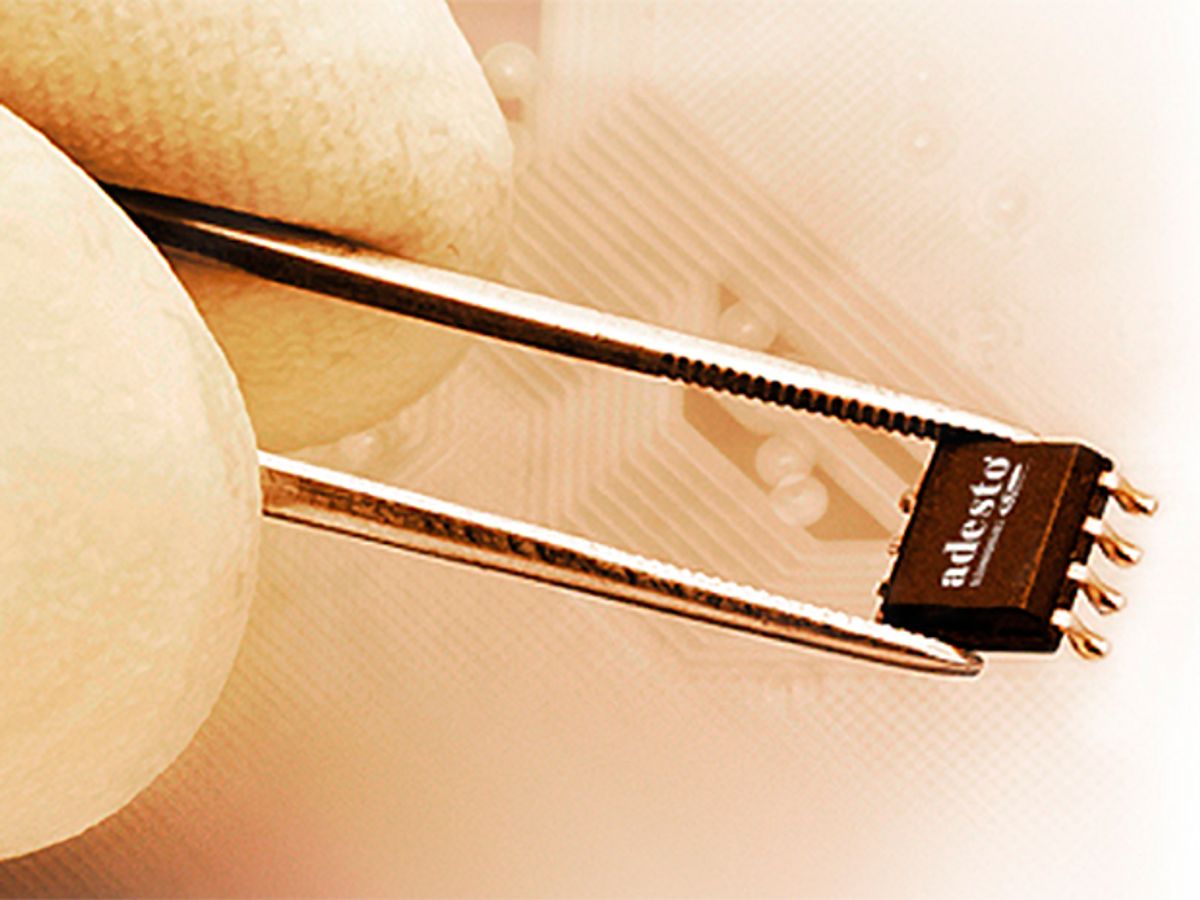Last week, Sunnyvale, Calif.-based Adesto Technologies announced a new addition to its memory family, an ultra-low-power version of RRAM called Moneta.
RRAM (resistive RAM) is being considered as a potential replacement for NAND flash, which has struggled with miniaturization so much that companies have opted to relax the size of their memory cells and stack them in three dimensions to get density gains (let’s call it the skyscraper solution).

Adesto is tackling a particular memory niche with the new technology: the popular low-capacity workhorse Electrically Erasable Programmable Read-Only Memory (EEPROM). “What we’re trying to do as a company is not to build plain vanilla nonvolatile memory devices,” says CTO Gideon Intrater. “We’re trying to build memory devices that are tuned to solving specific problems.”
In this case, the problem is the energy consumed by memory in small electronics, particularly those, such as environmental or medical monitors, that have batteries that can’t be serviced easily or regularly.
Adesto says its chips consume less than 1/20th the energy of the closest competitor. As a benchmark, the company gives the example of 250 kilobytes of memory that’s logging biometric data, reading and writing 128 bytes per minute. In that scenario, the company says, the lowest-energy competitor would empty a small 10 milliamp-hour button cell battery in 4.5 months, while Adesto’s Moneta wouldn’t do so for 25 years. That is, of course, if you imagine the memory as the only thing drawing power.
The choice of memory device is responsible for much of the energy reduction, Intrater says. Like other forms of RRAM, the company’s device uses different levels of electrical resistance to represent information. The company’s version, dubbed conductive-bridge RAM, injects atoms from one electrode to create a conductive filament linking to the other. This filament can be broken by reversing the voltage.
The chip’s power electronics also help reduce the power requirements, Intrater says. It can take upwards of 10 V to write to flash, for example, and not much less to do a read, Intrater says. The voltage of the electricity supplied to the chip is raised to those levels using charge pumps that consume a lot of power in the conversion process.
The new RRAM family operates at lower voltages that do not require charge pumps, Intrater says, although companies that want to use the memory may have to make some adjustments to their design; the memory needs three power rails supplying different voltages, and not all systems have that.
Rachel Courtland, an unabashed astronomy aficionado, is a former senior associate editor at Spectrum. She now works in the editorial department at Nature. At Spectrum, she wrote about a variety of engineering efforts, including the quest for energy-producing fusion at the National Ignition Facility and the hunt for dark matter using an ultraquiet radio receiver. In 2014, she received a Neal Award for her feature on shrinking transistors and how the semiconductor industry talks about the challenge.



